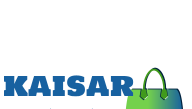Introduction
The leather industry has long been associated with negative environmental impacts, but there is a new approach that is revolutionizing the way we produce leather. SWaSS, also known as Smart Water-automated Saving System, is an innovative method that is not only eco-friendly but also cost-effective. In this article, we will explore the benefits of SWaSS and how it is transforming the leather industry.
What is SWaSS?
- Definition:
- SWaSS is a groundbreaking technique in leather production, emphasizing sustainable water usage.
- How it works:
- SWaSS utilizes advanced automation technology to optimize water usage throughout the leather manufacturing process.
- It effectively minimizes water wastage, reduces energy consumption, and promotes a greener approach to leather production.
Benefits of SWaSS
- Environmental advantages:
- SWaSS significantly reduces water consumption by up to 50% compared to conventional leather production methods.
- It minimizes water pollution by implementing efficient water treatment systems, ensuring that harmful chemicals are properly treated before release.
- The decreased energy usage leads to a reduced carbon footprint, contributing to a healthier environment.
- Cost-effective solution:
- By reducing water consumption and energy usage, SWaSS helps leather manufacturers save on operational costs.
- The automated system allows for better resource management, leading to improved efficiency and higher profitability in the long run.
- Enhanced product quality:
- SWaSS ensures better control over the production process, resulting in higher quality leather products.
- With precise water conservation and treatment techniques, the leather produced using SWaSS is known for its consistent quality and durability.
- Strengthened brand reputation:
- By adopting eco-friendly practices like SWaSS, leather manufacturers position themselves as socially responsible and environmentally conscious.
- Consumers are increasingly seeking products that align with their values, and implementing sustainable practices can enhance a brand’s image and reputation.
The future of SWaSS in the leather industry
- Global adoption:
- As environmental concerns continue to grow, the leather industry is recognizing the need for sustainable practices.
- SWaSS offers a promising solution, and its adoption is expected to increase globally as more manufacturers become aware of its benefits.
- Upgrading existing systems:
- Existing leather production plants can implement SWaSS by retrofitting their systems with the necessary automation technology.
- This allows leather manufacturers to transition to eco-friendly practices without requiring extensive investments in new infrastructure.
- Collaboration and innovation:
- Collaboration between leather manufacturers, engineers, and environmental experts is crucial for further advancements in sustainable leather production.
- Continuous research and innovation in SWaSS and other eco-friendly techniques can further refine and improve the environmental performance of the leather industry.
Conclusion
SWaSS is revolutionizing the leather industry by providing an environmentally friendly alternative to traditional production methods. Its efficient water usage, reduced energy consumption, and cost-effective nature make it an attractive choice for leather manufacturers. As we move towards a greener future, SWaSS serves as a shining example of how innovation and sustainability can coexist within the leather industry.



